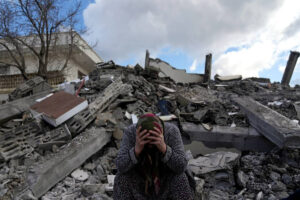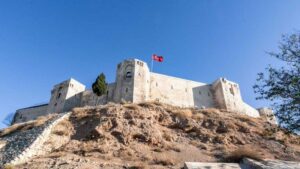
The number of victims of earthquakes that occurred in early February in the southeast of Turkey, exceeded the mark of 46 thousand people in this country, said Turkish President Recep Tayyip Erdogan.
“The number of victims of earthquakes in southeastern Turkey has reached 46,104,” he was quoted as saying by Anadolu Agency. Last week Ankara reported about 46 thousand dead, but at that time the issue was about data from two countries: Turkey and Syria.
According to Erdogan, the construction of 488 thousand new houses in the areas affected by earthquakes is planned.
The earthquake of magnitude 7.7 occurred in Turkey on the night of February 6, followed by a series of aftershocks, one of which had a magnitude of 7.6. These tremors caused serious damage and casualties in neighboring Syria as well.

A powerful earthquake in Turkey and Syria has severely damaged the Gaziantep fortress, a UNESCO World Heritage Site, as well as many archaeological sites in these countries, local media reported Monday.
Several bastions in the eastern, southern and southeastern parts of the fortress, located in the Turkish province of Gaziantep, were completely destroyed by the earthquake, in the walls of the other bastions were large cracks. The dome and the eastern wall of the mosque, built in the 17th century and located next to the fortress, also collapsed partially.
Fortifications on the site of the fortress first appeared in the Hittite period (1800 1180 BC). Then the fortifications were reconstructed in the II-III centuries AD under the Roman Empire and in the VI century AD under the Byzantine Empire.
In Syria, the citadel of Aleppo, a UNESCO World Heritage site, was damaged in an earthquake. The oldest fortifications of the citadel were built in the 10th century, and it was an important stronghold during the Crusades. In the 13th century the citadel developed into a rich town. Subsequently, the fortress was attacked by the Mongols in 1259 and in 1400 by the conqueror Tamerlane. In 1516 it was taken by the forces of the Ottoman Empire, and since then the military role of the citadel was diminishing.
Cracks also appeared in the walls of the National Museum of Aleppo. Many historic buildings in Aleppo and Hama provinces were damaged.
A powerful earthquake in Turkey and Syria and the aftershocks that followed caused numerous buildings to collapse in several provinces, and earth tremors felt in Lebanon, Jordan and Israel.